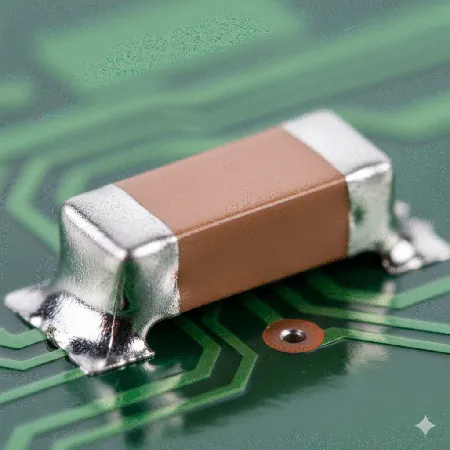
Revolutionizing Clean Hydrogen: How E-Waste Tin Powers a New Catalyst
2025-09-05
Author: Jia
Transforming E-Waste into Energy Solutions
A groundbreaking study from scientists in China and Australia reveals an innovative way to turn discarded tin from electronics into a powerful catalyst for clean hydrogen production. This exciting development signifies a leap forward in tackling the dual challenges of electronic waste and renewable energy.
The Role of Multilayer Ceramic Capacitors (MLCCs)
At the heart of this innovation are multilayer ceramic capacitors (MLCCs)—ubiquitous components found in everyday electronics like smartphones and TVs. Traditionally composed of barium titanate (BaTiO₃) dielectrics mixed with tin, nickel, and copper electrodes, these components often end up in landfills, contributing to growing e-waste.
A Game-Changing One-Step Process
Instead of embarking on the complicated route of metal separation, researchers developed a straightforward one-step ball milling process to recycle these components. This method resulted in the creation of a highly effective Al-doped BTO/Ni-Sn-Cu composite catalyst, where nanoscale BTO particles are seamlessly coated with a thin layer of the metallic alloy.
Tin: The Unsung Hero of Hydrogen Production
Tin takes center stage in this innovative catalyst, enhancing light absorption and charge separation when alloyed with nickel and copper. When subjected to piezo-photocatalytic tests, the resulting recycled catalyst achieved impressive hydrogen production rates of 345.8 μmol/g/h—over four times greater than traditional commercial BTO catalysts.
A Boost for Sustainability and Cost-Effectiveness
But the benefits don’t stop there! A life cycle analysis revealed that this recycling process could slash CO₂ emissions by an astonishing 78% and cut production costs by 70% compared to conventional methods. This advancement not only highlights the potential of e-waste as a sustainable resource but also marks a significant stride towards the circular economy.
Looking Ahead: The Future of Tin in Renewable Energy
By effectively turning MLCC waste into cutting-edge hydrogen catalysts, this research underscores the crucial role of tin in fostering sustainable energy solutions and advancing the renewable energy transition. This could pave the way for new technologies that further harness the potential of e-waste.
Discover More Innovations in Tin Technology!
For those intrigued by the future of e-waste and tin technologies, stay tuned to Tin Valley—your go-to hub for the latest innovations in this essential metal.


 Brasil (PT)
Brasil (PT)
 Canada (EN)
Canada (EN)
 Chile (ES)
Chile (ES)
 Česko (CS)
Česko (CS)
 대한민국 (KO)
대한민국 (KO)
 España (ES)
España (ES)
 France (FR)
France (FR)
 Hong Kong (EN)
Hong Kong (EN)
 Italia (IT)
Italia (IT)
 日本 (JA)
日本 (JA)
 Magyarország (HU)
Magyarország (HU)
 Norge (NO)
Norge (NO)
 Polska (PL)
Polska (PL)
 Schweiz (DE)
Schweiz (DE)
 Singapore (EN)
Singapore (EN)
 Sverige (SV)
Sverige (SV)
 Suomi (FI)
Suomi (FI)
 Türkiye (TR)
Türkiye (TR)
 الإمارات العربية المتحدة (AR)
الإمارات العربية المتحدة (AR)